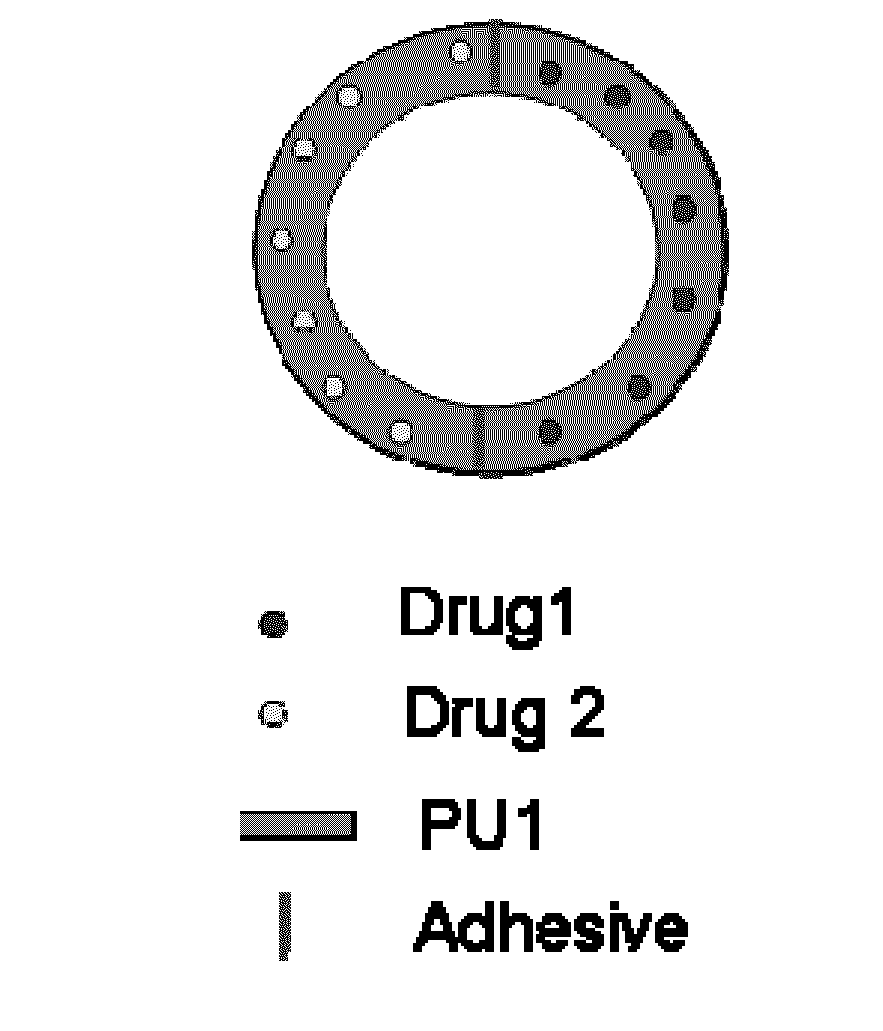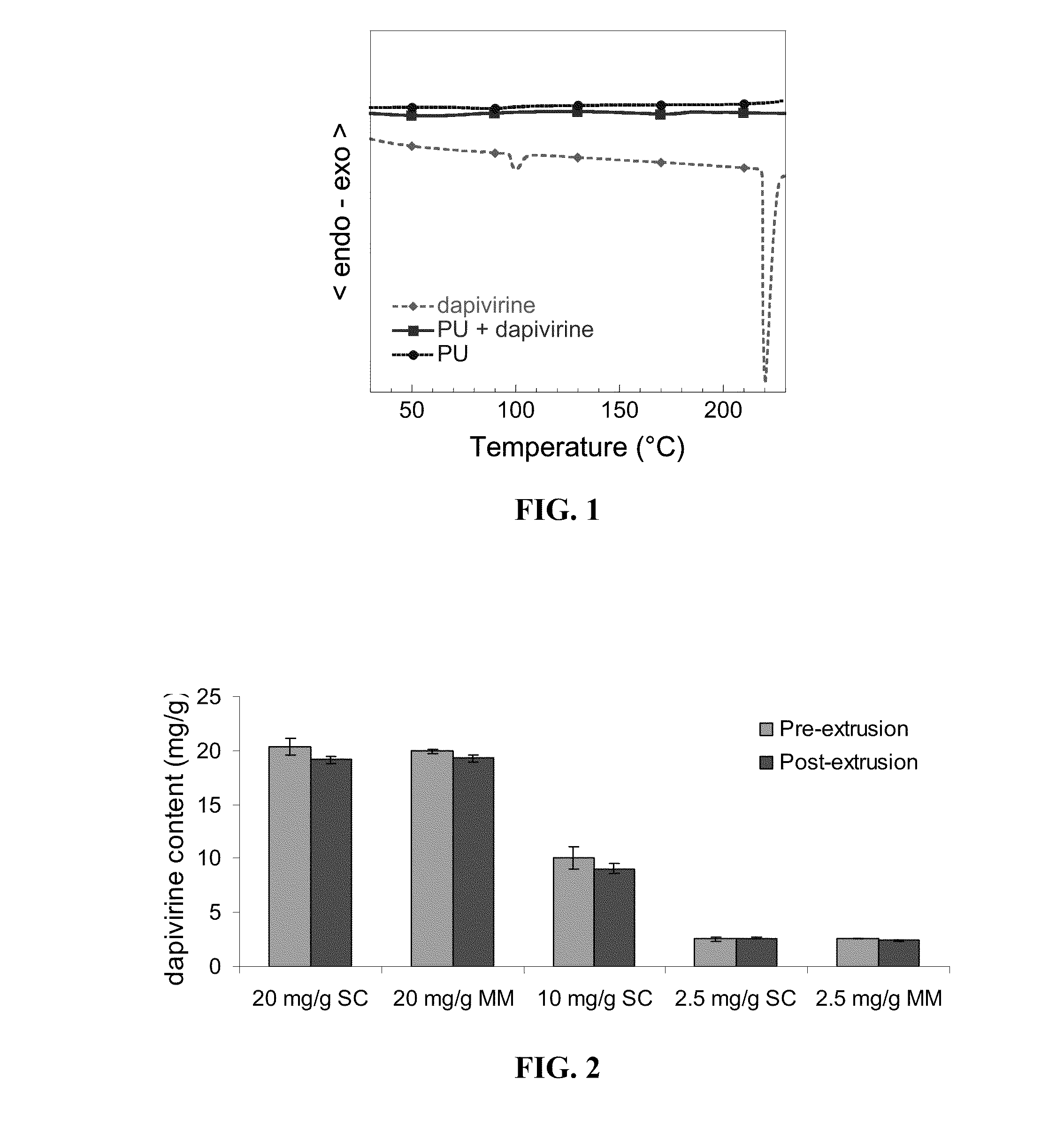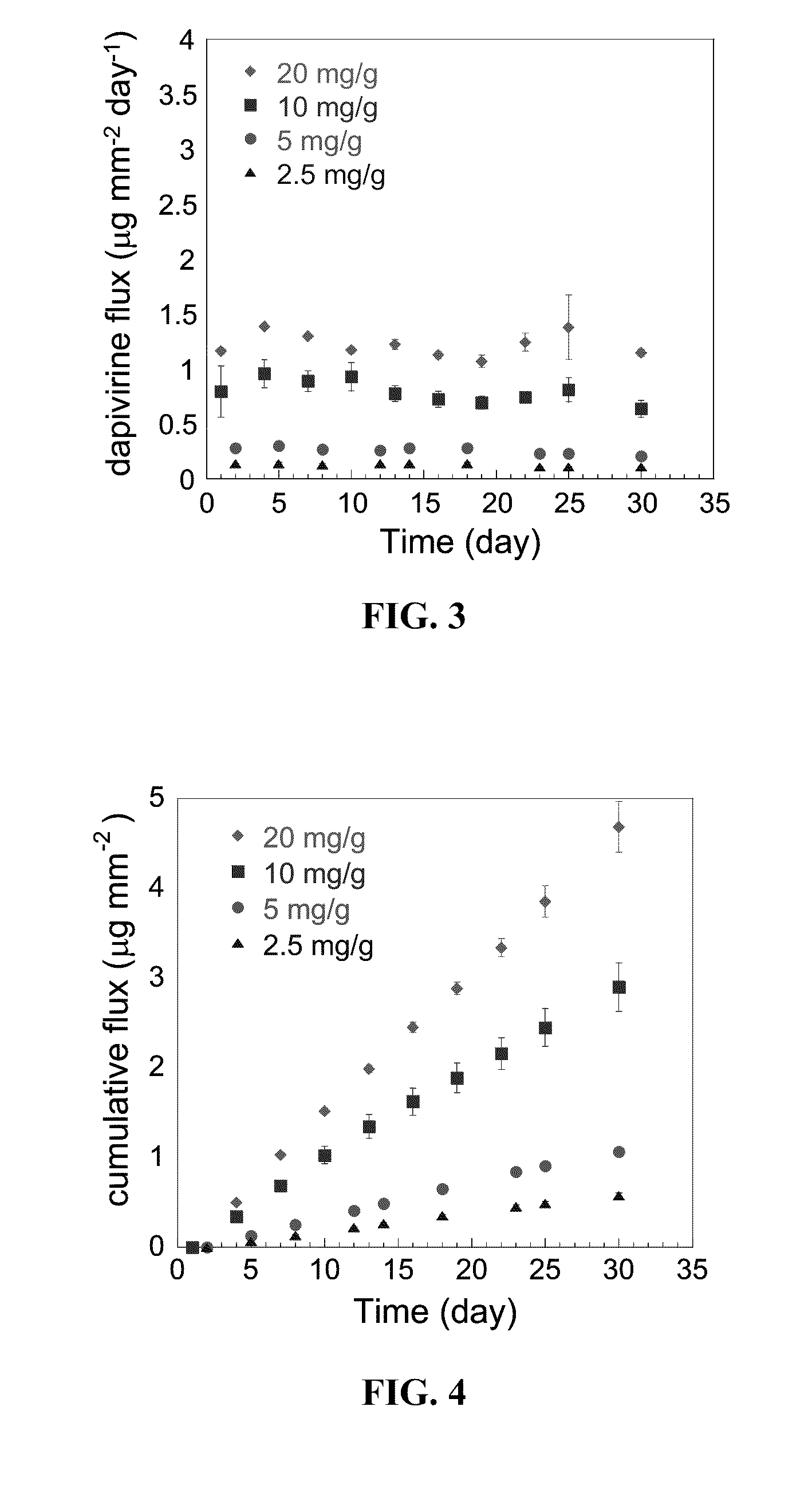Linear order release polymer
- Summary
- Abstract
- Description
- Claims
- Application Information
AI Technical Summary
Benefits of technology
Problems solved by technology
Method used
Image
Examples
example 1
Formation of Drug Incorporated PU Rods and Rings
[0048]Incorporation of Dapivirine in PU matrix: Homogenous distribution of dapivirine in the PU matrix was achieved by two different methods. In the first method, PU and dapivirine (dapivirine / PU=20 mg / g, 10 mg / g, 5 mg / g, 2.5 mg / g) were dissolved in 75:25 mixture of dichloromethane and tetrahydrofuran. About 75% of the solvent was removed under reduced pressure and the viscous solution of PU and dapivirine was poured into a silanized crystallization flask which was further dried under air at a flow rate of 4 L / min for 2-3 days. The dapivirine incorporated PU films thus obtained were cut into small pieces and further dried under high vacuum until constant weight was achieved. In order to make the drug incorporation process simple and economically feasible for large scale production, the second method employed mixing of dapivirine crystals into molten PU. This method is closely related to the physical process of in-line screw compounding...
example 2
Stability of Dapivirine Under Extrusion Conditions
[0050]A series of experiments were conducted to confirm that dapivirine was stable in PU matrix in the extrusion process. First, the thermal stability of dapivirine at the extrusion temperature was examined and analyzed for its non-degradability as follows: dapivirine was heated at 185° C. isothermally for 2 h under air atmosphere and 1H and 13C NMR spectra were recorded (Mercury 400 MHz spectrometer, Varian) for the heated and unheated dapivirine. Furthermore, LC / MS analysis was performed on the heated sample and compared to non-heated controls. The MS instrumentation consisted of Micromass Quattro II Triple Quadruple Mass Spectrometer, Waters, Milford, Mass. No change in the LC / MS and NMR spectra of the heated dapivirine sample was observed when compared with that of the non-heated sample indicating no detectable degradation of dapivirine.
[0051]Second, a differential scanning calorimetric (DSC) scan was obtained on dapivirine from ...
example 3
Solubility Study of Dapivirine
[0055]Solubility studies of dapivirine were conducted to determine the appropriate sink conditions for the in vitro release studies. Dapivirine is a hydrophobic molecule; therefore a co-solvent system that can provide sink conditions (solubility greater than 3 times the maximum concentration achieved in the release medium) during dapivirine release study was needed. Since a co-solvent system consisting of 50:50 v / v i-prOH:water has been utilized previously for long-term release studies of dapivirine from silicone rings11,18, the solubility of dapivirine was determined in 50:50 and 25:75 v / v i-prOH:water solutions. Additionally, solubility of dapivirine in liposome dispersions was evaluated in an attempt to utilize them as biorelevant sink conditions.14,21 The liposome dispersions of 10 mg / mL in 25 mM pH 4.2 acetate buffer (osmolarity adjusted to 310 mOsm / kg with NaCl) and 25 mM pH 7.6 phosphate buffer (osmolarity adjusted to 310 mOsm / kg with NaCl) were ...
PUM
| Property | Measurement | Unit |
|---|---|---|
| Fraction | aaaaa | aaaaa |
| Fraction | aaaaa | aaaaa |
| Fraction | aaaaa | aaaaa |
Abstract
Description
Claims
Application Information
 Login to View More
Login to View More - R&D
- Intellectual Property
- Life Sciences
- Materials
- Tech Scout
- Unparalleled Data Quality
- Higher Quality Content
- 60% Fewer Hallucinations
Browse by: Latest US Patents, China's latest patents, Technical Efficacy Thesaurus, Application Domain, Technology Topic, Popular Technical Reports.
© 2025 PatSnap. All rights reserved.Legal|Privacy policy|Modern Slavery Act Transparency Statement|Sitemap|About US| Contact US: help@patsnap.com



